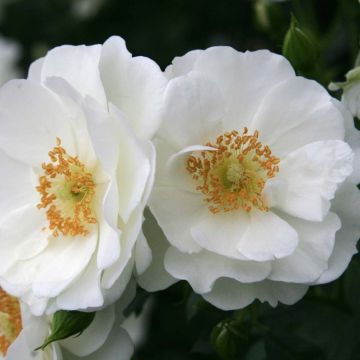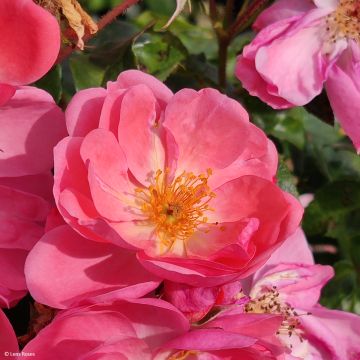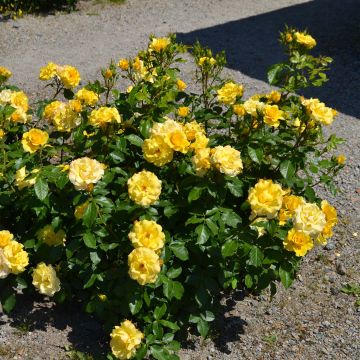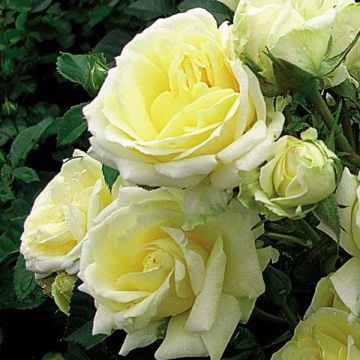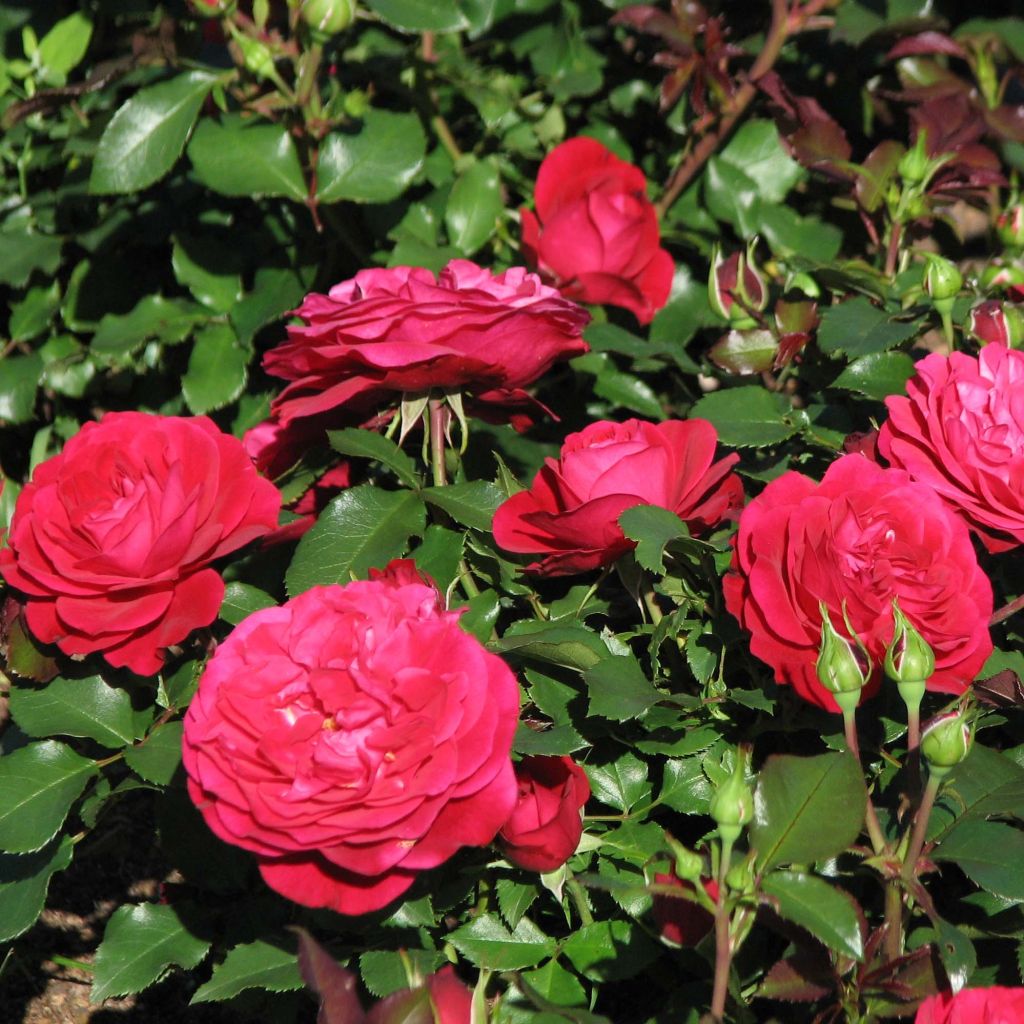

Rosa polyantha 'Mona Lisa' - Shrub Rose


Rosa polyantha 'Mona Lisa' - Shrub Rose
Rosa polyantha 'Mona Lisa' - Shrub Rose
Rosa polyantha MONA LISA ® 'Meilyxir'
Meilyxir
Thanks to the people (for the order preparation and shipping), the rose bush I received looks healthy. Planted close to the same variety, I am now patiently waiting for it to take root... or not?
Thierry, 28/10/2023
This item cannot be shipped to the selected country
Delivery charge from €5.90
Delivery charge from €5.90
Delivery charge from €5.90
Delivery to Corse prohibited
More information
Schedule delivery date,
and select date in basket
This plant carries a 24 months recovery warranty
More information
We guarantee the quality of our plants for a full growing cycle, and will replace at our expense any plant that fails to recover under normal climatic and planting conditions.
From €5.90 for pickup delivery and €6.90 for home delivery
Express home delivery from €8.90.
From €5.90 for pickup delivery and €6.90 for home delivery
Express home delivery from €8.90.
From €5.90 for pickup delivery and €6.90 for home delivery
Express home delivery from €8.90.
Delivery to Corse prohibited: UE law prohibits the import of this plant from mainland France to Corse as part of the fight against Xylella fastidiosa. Please accept our sincere apologies.
More information

Does this plant fit my garden?
Set up your Plantfit profile →
Description
The 'Mona Lisa' Rose (Meilyxir) is a new polyantha rose bush that stands out for its exceptional resistance to diseases and the radiant colour of its flowers, which are vermillion red. Its excellent health has earned it the prestigious German ADR label, and its vigour and beautiful floribundity have been rewarded with 1st prize from the National Horticultural Society of France. Its beautiful double roses, gathered in bouquets, bloom from June to October on a small, low, compact bush, well supplied with medium green foliage. Plant it in your borders, flower beds, or a patio pot. A handful of its flowers dipped in a vase is a true decoration for the house. Combine them with white, pink, or even mauve roses!
'Mona Lisa' or 'Meilyxir' is a modern bush rose with clustered flowers introduced by the Angevin rose grower Claude Michel in 2008 and distributed by Meilland. This variety forms a low, dense, upright bush, quickly reaching about 65 cm (26in) in height and 45 cm (18in) in width. It produces green, sturdy, thorny branches, which bear abundant, ample, healthy foliage with a medium matte green colour. Throughout the summer, if you take care to remove faded flowers, the plant produces successive waves of large buds that open into beautiful double flowers measuring 9-10 cm (4in) in diameter. They are composed of 80 petals of an intense red. This variety is scentless. The flowers are grouped in bouquets of 3 to 5 and carried at the end of long shoots from the current year or emerging from 2-year-old stems.
This 'Mona Lisa' rose is an easy plant to grow by everyone, everywhere. It fits just as well in a nice pot on the terrace or balcony as among perennials or other small bushes, along pathways or even on the edge of flower beds. The colour of its flowers, bright, enlivens any decor for months. To accompany it, consider catmints and small gauras that are just as generous. Some light-flowering perennials (autumn asters, foxgloves, penstemons), grasses, lavenders, or perennial geraniums (Rozanne, Pink Cloud) are ideal for enhancing its beauty. It will be superb planted in groups of 3 surrounded by silver foliage (Cinerea maritima, Dusty Miller, Artemisia 'Valerie Finnis'...)
Report an error about the product description
Rosa polyantha 'Mona Lisa' - Shrub Rose in pictures
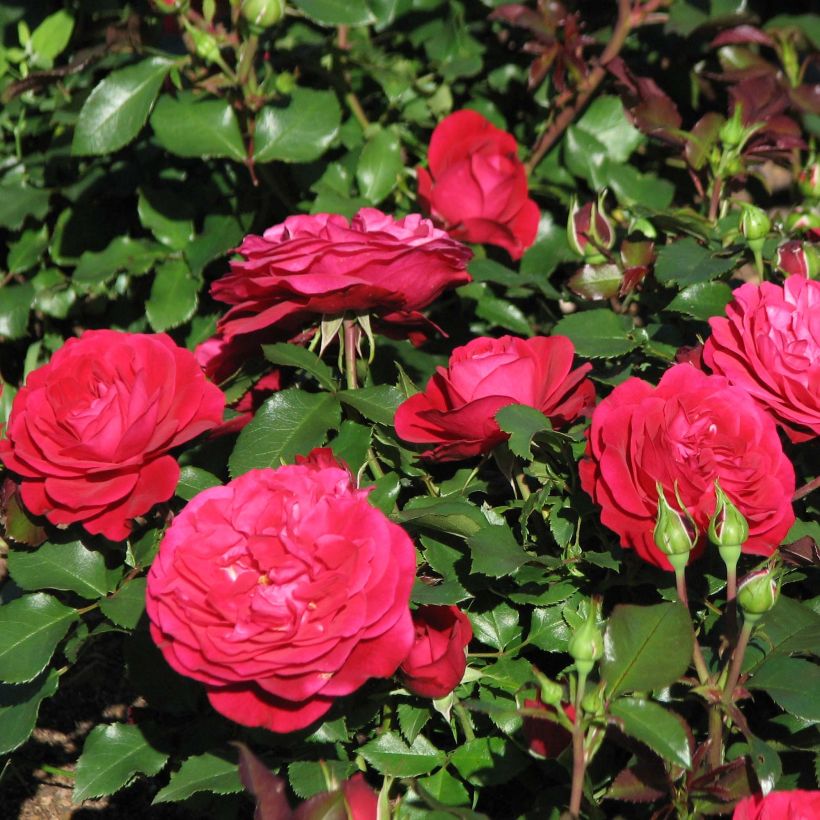

Plant habit
Flowering
Foliage
Botanical data
Rosa
polyantha
MONA LISA ® 'Meilyxir'
Rosaceae
Meilyxir
Cultivar or hybrid
Rosa multiflora (Wrapped bare root)
Other Polyantha clustered Roses
Planting and care
Choose a spot with plenty of sunshine or light shade to grow your 'Mona Lisa' rose. While modern roses can tolerate different soil types, they do not like too much limestone. Use well-worked, rich soil that isn't too heavy for best results. When planting your rose, crumble the soil and add an amendment like blood, fish and bone to the bottom of the hole. Water generously after planting to remove any air pockets and continue watering regularly for a few weeks to help the roots establish.
Pruning is essential for repeat-flowering roses to promote flowering. It should be done in three steps:
1. Maintenance pruning: regularly shorten the flowering stems during the season. Remove faded flowers along with their stem and 2 or 3 leaves to encourage repeat flowering.
2. Autumn pruning: light pruning in preparation for a true spring pruning. This is not recommended in regions with cold winters to avoid weakening the bush.
3. Spring pruning: in February-March, when the buds have become 2 to 3 cm (1in) long shoots, trim the strong branches by a quarter of their length.
Pruning should always aim to open up the centre of the bush and remove dead wood, diseased branches, and weak shoots. Keep the most vigorous branches, usually 3 to 6, well-positioned to maintain a beautiful habit. Always prune at a slant, ½ cm or 1 cm (0in) above an outward-facing bud.
Roses may develop unsightly spots at the end of summer, but this is a natural occurrence and doesn't harm the rose's growth.
Planting period
Intended location
Care
-
, onOrder confirmed
Reply from on Promesse de fleurs
Roses by purpose
Haven't found what you were looking for?
Hardiness is the lowest winter temperature a plant can endure without suffering serious damage or even dying. However, hardiness is affected by location (a sheltered area, such as a patio), protection (winter cover) and soil type (hardiness is improved by well-drained soil).

Photo Sharing Terms & Conditions
In order to encourage gardeners to interact and share their experiences, Promesse de fleurs offers various media enabling content to be uploaded onto its Site - in particular via the ‘Photo sharing’ module.
The User agrees to refrain from:
- Posting any content that is illegal, prejudicial, insulting, racist, inciteful to hatred, revisionist, contrary to public decency, that infringes on privacy or on the privacy rights of third parties, in particular the publicity rights of persons and goods, intellectual property rights, or the right to privacy.
- Submitting content on behalf of a third party;
- Impersonate the identity of a third party and/or publish any personal information about a third party;
In general, the User undertakes to refrain from any unethical behaviour.
All Content (in particular text, comments, files, images, photos, videos, creative works, etc.), which may be subject to property or intellectual property rights, image or other private rights, shall remain the property of the User, subject to the limited rights granted by the terms of the licence granted by Promesse de fleurs as stated below. Users are at liberty to publish or not to publish such Content on the Site, notably via the ‘Photo Sharing’ facility, and accept that this Content shall be made public and freely accessible, notably on the Internet.
Users further acknowledge, undertake to have ,and guarantee that they hold all necessary rights and permissions to publish such material on the Site, in particular with regard to the legislation in force pertaining to any privacy, property, intellectual property, image, or contractual rights, or rights of any other nature. By publishing such Content on the Site, Users acknowledge accepting full liability as publishers of the Content within the meaning of the law, and grant Promesse de fleurs, free of charge, an inclusive, worldwide licence for the said Content for the entire duration of its publication, including all reproduction, representation, up/downloading, displaying, performing, transmission, and storage rights.
Users also grant permission for their name to be linked to the Content and accept that this link may not always be made available.
By engaging in posting material, Users consent to their Content becoming automatically accessible on the Internet, in particular on other sites and/or blogs and/or web pages of the Promesse de fleurs site, including in particular social pages and the Promesse de fleurs catalogue.
Users may secure the removal of entrusted content free of charge by issuing a simple request via our contact form.
The flowering period indicated on our website applies to countries and regions located in USDA zone 8 (France, the United Kingdom, Ireland, the Netherlands, etc.)
It will vary according to where you live:
- In zones 9 to 10 (Italy, Spain, Greece, etc.), flowering will occur about 2 to 4 weeks earlier.
- In zones 6 to 7 (Germany, Poland, Slovenia, and lower mountainous regions), flowering will be delayed by 2 to 3 weeks.
- In zone 5 (Central Europe, Scandinavia), blooming will be delayed by 3 to 5 weeks.
In temperate climates, pruning of spring-flowering shrubs (forsythia, spireas, etc.) should be done just after flowering.
Pruning of summer-flowering shrubs (Indian Lilac, Perovskia, etc.) can be done in winter or spring.
In cold regions as well as with frost-sensitive plants, avoid pruning too early when severe frosts may still occur.
The planting period indicated on our website applies to countries and regions located in USDA zone 8 (France, United Kingdom, Ireland, Netherlands).
It will vary according to where you live:
- In Mediterranean zones (Marseille, Madrid, Milan, etc.), autumn and winter are the best planting periods.
- In continental zones (Strasbourg, Munich, Vienna, etc.), delay planting by 2 to 3 weeks in spring and bring it forward by 2 to 4 weeks in autumn.
- In mountainous regions (the Alps, Pyrenees, Carpathians, etc.), it is best to plant in late spring (May-June) or late summer (August-September).
The harvesting period indicated on our website applies to countries and regions in USDA zone 8 (France, England, Ireland, the Netherlands).
In colder areas (Scandinavia, Poland, Austria...) fruit and vegetable harvests are likely to be delayed by 3-4 weeks.
In warmer areas (Italy, Spain, Greece, etc.), harvesting will probably take place earlier, depending on weather conditions.
The sowing periods indicated on our website apply to countries and regions within USDA Zone 8 (France, UK, Ireland, Netherlands).
In colder areas (Scandinavia, Poland, Austria...), delay any outdoor sowing by 3-4 weeks, or sow under glass.
In warmer climes (Italy, Spain, Greece, etc.), bring outdoor sowing forward by a few weeks.


































